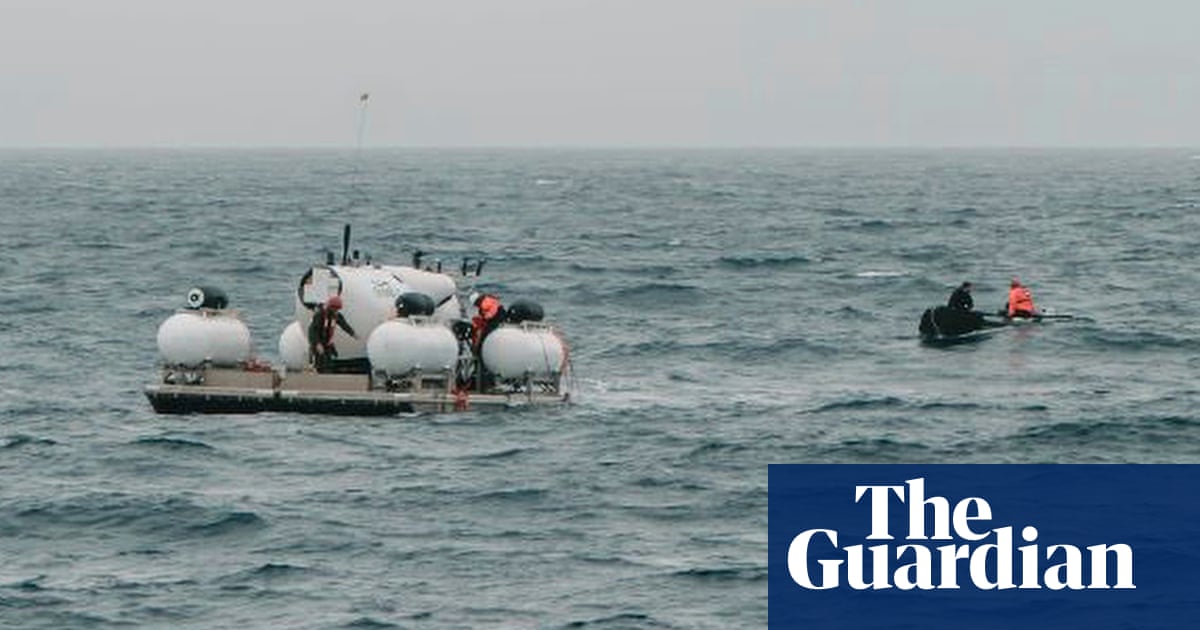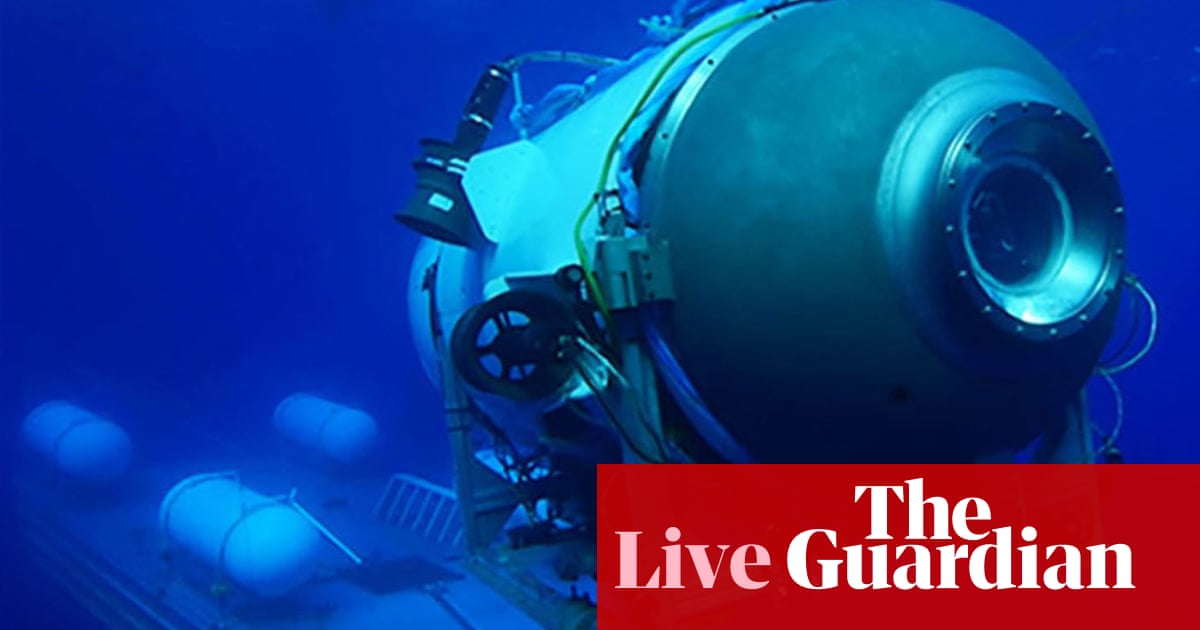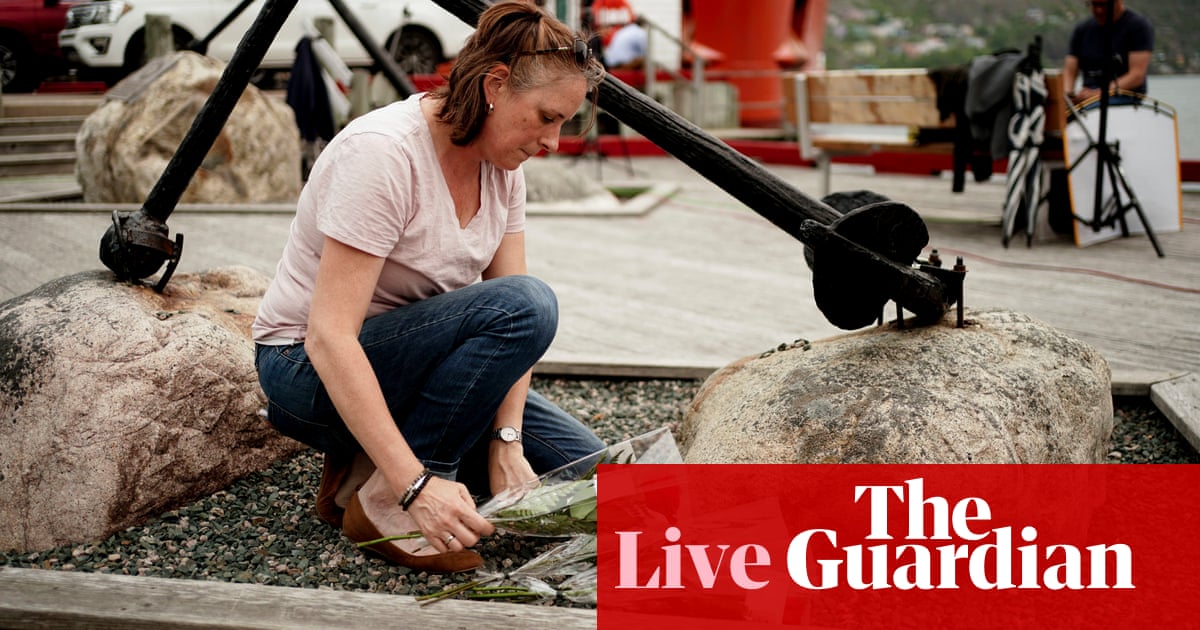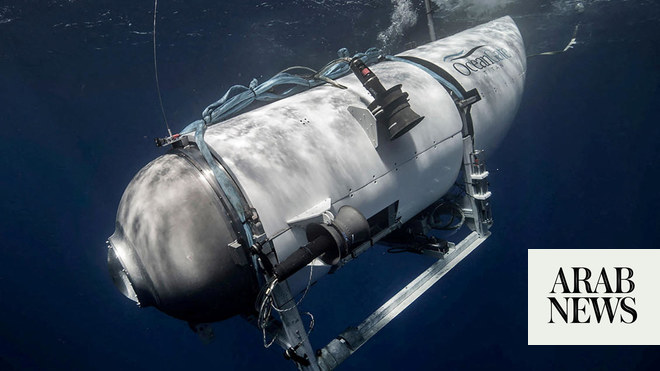
US Coast Guard officials said on Tuesday afternoon that the crew of the submersible Titan, which went missing in the Atlantic during a dive to the wreck of the Titanic, had about 40 hours of breathable air remaining, if they are still alive.
Capt Jamie Frederick also told reporters at a media briefing that a massive sea and air search that began on Sunday night for the vessel and five men aboard, and which has so far covered 7,600 sq miles of a remote area of the ocean, had “not yielded any results”.
Rescue teams were racing against time to locate the 22ft-long (6.7-metre-long) vessel, which had a 96-hour supply of oxygen when contact was lost on Sunday at one hour and 45 minutes into its descent to the wreck site 12,500ft (3,800 metres) beneath the ocean’s surface, about 370 miles (600km) from the coast of Newfoundland.
“We know from the data that we were using as a starting point, [their available air] was 96 hours. We know at this point we’re approximately about 40, 41 hours,” Frederick said.
Aircraft from the US Coast Guard, US navy and Canadian military were scouring the surface by sight and radar, he added, and were able to drop sonar buoys to monitor under water earlier today.
“Search efforts have continued through last night and today. Those search efforts have not yielded any results,” Frederick said, announcing that a “unified command” had been set up between the agencies to coordinate the effort.
Private companies have offered vessels with deep ocean capabilities, he said: “This is a complex search effort, which requires multiple agencies with subject matter expertise and specialized equipment.”
On Tuesday morning, military authorities said the search was expanding to under the water, using sonar and other hi-tech equipment, enhancing surface operations that had continued through the night.
US Coast Guard C-130 rescue planes joined the air force national guard, Canadian aircraft and vessels, and a research ship belonging to OceanGate Expeditions, the organizers of the dive mission, on Monday in the search for the five crew members aboard the carbon fiber and titanium submersible Titan.
They include Hamish Harding, 58, a British explorer and pilot who has previously taken a suborbital spaceflight; British Pakistani businessman Shahzada Dawood, 48; and Dawood’s son Sulaiman, 19.
Also aboard are Paul Henri Nargeolet, a former French navy commander, deep diver and submersible pilot widely considered the leading authority on the Titanic wreck site, and Stockton Rush, the founder of OceanGate, the company confirmed on Tuesday afternoon.
On Tuesday morning, Rear Adm John Mauger, commander of the US Coast Guard’s first district, said search crews had flown over an area “about the size of Connecticut” trying to establish if Titan had surfaced anywhere.
“We have a commercial vessel that’s on scene now, that has remote operated vehicles, that will give us the ability to search under the water as well,” he told ABC News.
He said a Canadian aircraft had dropped sonar buoys to listen for the submersible while surface crews were expanding the search area.
Also on Tuesday, the New Republic published a report claiming that a former OceanGate employee was fired after raising safety concerns about the submersible, including that it was “not capable” of descending to the depth of the Titanic wreck.
The ex-employee, former marine operations director David Lochridge, was countersued by the company for leaking proprietary information, according to documents seen by the outlet. The case was eventually settled out of court.
A veteran Titanic expert who was a member of the 1985 expedition that located the wreck told the Guardian that the deep sea exploration community was “shattered” by the episode.
“This is the day that we have been fearing for a long, long time – when you lose a sub in really deep water,” said Joe MacInnis, a Canadian adventurer who has made several dives to the wreck. “It doesn’t look good.”
A statement sent to the Guardian on OceanGate’s behalf by a crisis communications company on Tuesday said it was “praying” for the safe return of Titan’s crew and passengers.
“Our entire focus is on the wellbeing of the crew and every step possible is being taken to bring the five crew members back safely,” the statement said. “We are deeply grateful for the urgent and extensive assistance we are receiving from multiple government agencies and deep-sea companies as we seek to reestablish contact with the submersible.”
Mark Butler, managing director of Harding’s company Action Aviation, told the Associated Press that he remained hopeful.
“There is still plenty of time to facilitate a rescue mission – there is equipment on board for survival in this event,” he said. “We’re all hoping and praying he comes back safe and sound.”
Others were less confident. “I’m not optimistic just because I know the logistics of it. And I know how vast the ocean is, and how very tiny the craft is,” American television writer Mike Reiss, who dived to the Titanic last year, told BBC Breakfast.
“If it’s down at the bottom, I don’t know how anyone’s going to be able to access it, much less bring it back up. There is a hope that it’s at, or near, the surface.”
Relatives of Dawood – a billionaire entrepreneur with a home in Surrey, UK, who is a director for the Prince’s Trust and the Seti Institute, which explores the possibility of extraterrestrial life – released a statement thanking well-wishers.
“We are very grateful for the concern being shown by our colleagues and friends and would like to request everyone to pray for their safety while granting the family privacy at this time,” it said.
“The family is well looked after and are praying to Allah for the safe return of their family members.”
The Dawoods are believed to have paid OceanGate up to $250,000 (£196,500) each for their places as “citizen scientists” aboard the submersible.
Their dive was scheduled to begin at about 4am local time on Sunday as the first crewed exploration of the company’s two-month expedition to the wreck of the famous ocean liner that sank in 1912 with the loss of more than 1,500 passengers and crew.
Harding, who holds a Guinness world record for the longest duration dive at full ocean depth by a crewed vessel – because of his 2021 dive to the lowest depth of the Mariana Trench with explorer Victor Vescovo – posted on Instagram at the weekend he was “proud” to join the expedition as a mission specialist.
“Due to the worst winter in Newfoundland in 40 years, this mission is likely to be the first and only manned mission to the Titanic in 2023,” he wrote.
Action Aviation’s Instagram account posted on Sunday that the submersible’s launch was “successful” and that Harding was “currently diving”.
In a further statement posted on Tuesday morning requesting privacy for his family, the company described Harding as “a living legend” of aviation. “[We] are extremely proud of Hamish and look forward to welcoming him home,” it said.
Experts say that even if the vessel is found, retrieving it could prove almost impossible, especially if it has become entangled in the Titanic’s wreckage.
Alistair Greig, a professor of marine engineering at University College London, said: “If it has gone down to the seabed and can’t get back up under its own power, options are very limited.
“While the submersible might still be intact, if it is beyond the continental shelf [more than 200m] there are very few vessels that can get that deep, and certainly not divers.”












